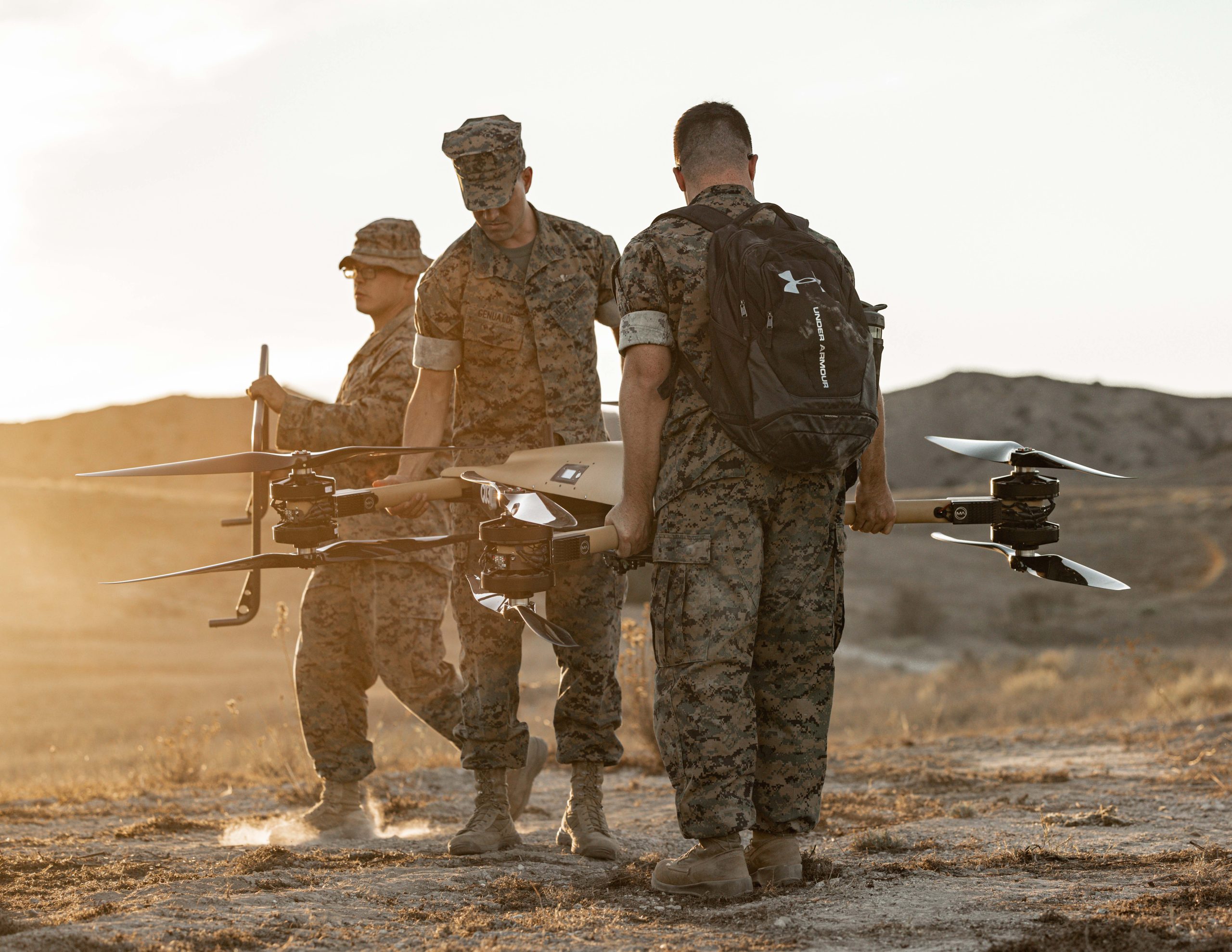
Identifying specific battlefield challenges – such as overcoming layered standoff weapons and securing theater entry – will be key for the U.S. and U.K. militaries when defining concepts to optimize human-machine teaming, a joint research study released last week warned.
“The militaries that best leverage autonomy and AI, then, will be those that best situate them within a warfighting system that includes concepts that guide their employment,” reads the new Leveraging Human-Machine Teaming.
The RUSI and Special Competitive Studies Project study, with which the Marine Corps Warfighting Laboratory collaborated, is intended to be a policy guide. Another objectives is to maintain interoperability among the U.S. and U.K and their allies, several report authors said. Immediate areas of concern include investing in unmanned systems at scale, where they can make a difference, and looking at them holistically from design to procurement and doctrine.
Speaking Friday to a group of defense writers, Sidharth Kaushal, one of the study’s authors and research fellow at RUSI, said, “the use of A.I. in warfare capabilities is not exactly new,” citing the American Patriot missile defense system and the Aegis systems on Arleigh Burke-class destroyers. Showing differences in how A.I. can be used not only in high-end systems, “the Russians are using off-the-shelf capabilities for loitering munitions” in Ukraine with effect.
With human-machine learning available, he added, commanders at the lowest levels can “have courses of action” open to them and communicate with each other on possibilities.
Kaushal said Western militaries operate in a hub-to-spoke relationship that can change with conditions, while China’s and Russia’s militaries operate from the top down, from centralized planning.
Western militaries “are more amenable from bottom up” actions, but both systems have advantages in combat, Ylber Bajraktari, a senior advisor at the Special Competitive Studies Project, said. In its 2014 invasion of eastern Ukraine, centralized control worked well for the Kremlin. In the February 2022 attack, however, it failed because the low-level Russian commanders did not have a alternative when cut off from higher command.
In conducting the study, Bajraktari said Western militaries need to recognize “any technological solution we come up with will be very short-lived.” He added it remains difficult to assess where an adversary is in countering that advantage since so much research is conducted in commercial or closed laboratories. He and others also noted that the public sector in the West may not know what technology is reaching fruition, say with space, in the private sector.
“There is considerable overlap with Replicator,” Kaushal added refering to the Pentagon effort to rapidly produce massive numbers of unmanned systems.
Speaking at a National Defense Industrial Association event in August, Kathleen Hicks, the Pentagon’s No. 2 civilian, said that using the Replicator Initiative “we’ll counter the PLA’s [People’s Liberation Army’s] mass with mass of our own, but ours will be harder to plan for, harder to hit and harder to beat.”
Hicks wanted delivery of Replicator in 2027 or earlier, but did not specify what systems would be involved or an estimated cost. Congress has been pressing the Department of Defense for specifics. With that timeline, the Pentagon is not looking for new technologies to invest in, but programs already in the budget or under development.
Likewise, the new study does not define ways to work these programs through Congress and Parliament.
“All-domain, attritable autonomous systems will overcome the challenge of antiaccess, area denial [A2AD] systems. Our ADA2 to thwart their A2AD,” she said.
Kaushal said that both the initiative and the study said to find “the right price point of expendable and survivability.” In the study, the term human-machine teaming refers to hardware. Human-machine collaboration refers to cognitive interaction.
The study notes both teaming and collaboration “are essential to Western militaries. A combination of capable individual – particularly at junior levels – and both AI and autonomy enables concepts of maneuver that are challenging for more rigid and hierarchical command structures.”
“The idea will be to create chaotic [situations] for adversaries … but not on your side,” Bajraktari said.





